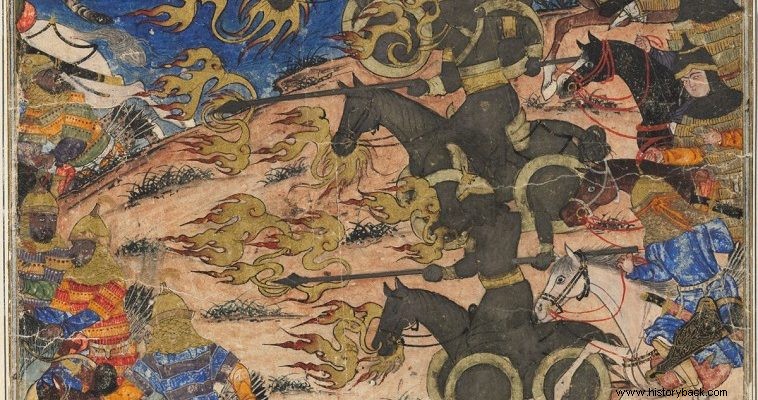
The concept of the mechanical worker, better known as a robot, existed in ancient Greece, whether it was realized or not, as early as heroic times. Homer shows Hephaestus served by mechanical maids.
However, the first "war robot" or war mechanical device, if ever it existed in any form, is undoubtedly Talos, the bronze giant who, according to legend, was built by Daedalus and which guarded Crete, the Minoan kingdom, " circling the island' three times a day.
Legend has it that Talos was neutralized by Medea when the latter removed a pyre that held the life-giving fluid of this mechanical creature, Ihora. When the "divine liquid" left Talos, the bronze being "died". The legend of the bronze robot Talos could be in the realm of fantasy, but it could well represent some other technological discovery of the Greeks, such as the chariot, hence the verb form "orbiter", used by all the ancient writers to state the motion of Talos.
So obviously Talos, whatever it was, moved on wheels. Another detail related to the terrible guardian of Minos concerns the behavior of Talos towards the enemies. According to the majority of ancient sources, Talos burned his victims. Leaving behind the terrible Talos and the beautiful Crete we will attempt a huge leap in time, moving to the 13th century AD. in France.
There a certain cleric, Walter of Chatillon, wrote an epic biography of M.Alexander, inspired by the ancient texts. Walter, relying mainly on the work of Curtius, did not take into account the Pseudo-Callisthenio pamphlet, but tried to rely on absolutely historical evidence. What is striking, however, is a miniature from the manuscript of "Alexandridos", as Walter called his work.
The miniature depicts a scene from the battle of Hydaspes, where Alexander faced and defeated the Indian king Porus. The amazing thing is that in the battle Alexander's army attacks the elephants of Poros led by three anthropomorphic beings who move on wheels and emit fire! As already mentioned, the Greek sage Zosimos Panopolitis, in his work "On Virtue" cites a manual for the construction of an artificial human.
Zosimus, ancestor of the medieval alchemists, quotes allegorical speech, which is not easy to decipher. In one of his described "visions" he is before a bronze man, possessor of the divine water.
The "divine water" could be naphtha, oil, an opinion that has been formulated by researchers, based on reports by Arrian and Plutarch. Connecting all the above, we could assume that the Greeks, who knew hydrocarbons, utilized this knowledge in the war field.
Otherwise, how could the representation from Walter's manuscript be explained, since in medieval times there is no information about the existence of similar constructions, at least in the West. Because in the East there were also new convictions which are indications that something was ultimately hidden behind the myth of Talos, but also the visions of Zosimos and the descriptions of Walter.
An Indian illustrated manuscript of 1330 – 40 AD. with the title "Sanamech" he talks about the use by Alexander's army of a strange weapon, the "iron horsemen of naphtha". The manuscript refers to iron structures, which had four wheels and were propelled by the burning of naphtha, which was also used as a weapon, as fire came out of the horses' mouths, just as liquid fire was fired from animal-shaped launchers on Byzantine ships, as mentioned by Anna Komneni.
In an Indian manuscript miniature these strange iron horsemen are depicted, running on wheels, brandishing spears, followed by common horsemen. Flames shoot out of their horses' mouths. Does all of the above prove the existence of some secret weapon, some humanoid war machine? This question cannot be answered. But why, if it existed, was the relevant technology not similarly exploited?
